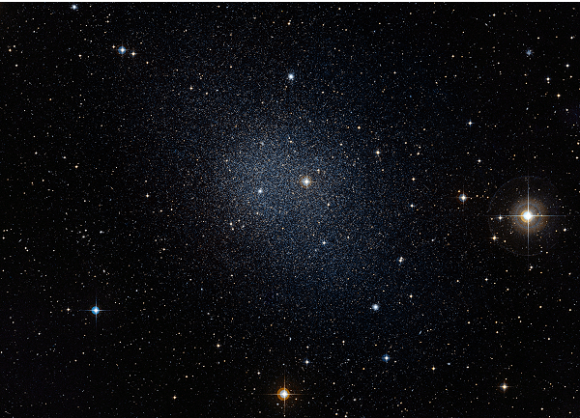| Online: | |
| Visits: | |
| Stories: |

| Story Views | |
| Now: | |
| Last Hour: | |
| Last 24 Hours: | |
| Total: | |
The Milky Way New Neighbor May Tell Us Things About the Universe

Dwarf spheroidal galaxies, like this one seen in the constellation Fornax, may exist in greater numbers than previously thought. Credit: ESO/Digital Sky Survey 2
As part of the Local Group, a collection of 54 galaxies and dwarf galaxies that measures 10 million light years in diameter, the Milky Way has no shortage of neighbors. However, refinements made in the field of astronomy in recent years are leading to the observation of neighbors that were previously unseen. This, in turn, is changing our view of the local universe to one where things are a lot more crowded.
For instance, scientists working out of the Special Astrophysical Observatory in Karachai-Cherkessia, Russia, recently found a previously undetected dwarf galaxy that exists 7 million light years away. The discovery of this galaxy, named KKs3, and those like it is an exciting prospect for scientists, since they can tell us much about how stars are born in our universe.(…)
Read the rest of The Milky Way New Neighbor May Tell Us Things About the Universe (496 words)
© mwill for Universe Today, 2014. |
Permalink |
No comment |
Post tags: ACS, dSph galaxies, dwatf spheroid galaxies, european extremely large telescope, Hubble Space Telescope, infrared, James Webb Telescope, KKR 25 dwarf spheroid galaxy, KKs3 dwarf spheroid galaxy, Special Astrophysical Observatory, Spitzer Space Telescope
Feed enhanced by Better Feed from Ozh
Source: http://www.universetoday.com/117550/the-milky-way-new-neighbor-may-tell-us-things-about-the-universe/



